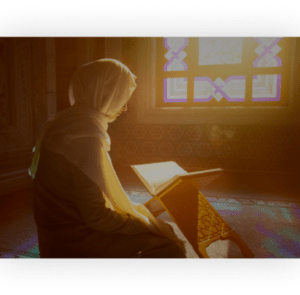Hijra
Contents
Hijra or Hegira (also spelled Hijrah) is the famous migration of the Prophet (peace be upon him and his progeny) and the Muslims from Mecca to Medina about fourteen years after the delegation of his holiness to prophethood. This migration took place because the Muslims were being persecuted in Mecca and were not being granted their rights. On the other hand, the Medinites had expressed their willingness to receive the Prophet and allow Islam to rule in their city. In this article on Islam4u.pro, we will take a look at:
The Reason Behind Hijra
Prophet Muhammad (peace be upon him and his progeny) began the preaching of Islam from his birthplace of Mecca after he was sent as a prophet to his people. He first began preaching to his own family members and relatives as God has commanded him by revealing the following verse of the Quran to him:
وَأَنذِرْ عَشِيرَتَكَ الْأَقْرَبِينَ ﴿214﴾
Warn the nearest of your kinsfolk. 1
Therefore, Prophet Muhammad began preaching Islam to his own family and relatives including many of whom were the polytheists and heads of Quraysh. So the Prophet held a banquet and invited all his relatives and told all of them to let go of polytheism and invited them to monotheism.
However, most of them, especially his uncle Abu Lahab (ابو لَهَب) and his cousin Abu Sufyan (ابو سفیان) who was from the Banu Umayyah (بنو امیة) and its chief did not accept his call and mounted opposition against him. On the other hand, his uncle and guardian Abu Talib (ابو طالب) concealed his faith in him as it was necessary to do so in order to ensure Muhammad’s protection against others and so that Abu Talib’s own life would not be endangered.
The Two Pledges of Allegiance That Lead to Hijra
In the hajj ceremony of the year 620 AD, six individuals from the Khazraj (خزرج) tribe living in Medina met with Prophet Muhammad. Prophet Muhammad invited them to Islam by reciting some verses of the Quran and explaining the ideas behind Islam to them. All six individuals became followers of Islam.
One year later, the same people brought seven others with them and they also embraced Islam. They swore an oath of allegiance to Muhammad that they would abide by all the rules of the Islamic religion and that they would acknowledge him as their prophet. This pledge came to be known as the “First Pledge of al-‘Aqabah.” Gradually through these people, Islam spread among the people of Medina and the number of Muslims there increased.
The following year, around 75 Muslims from both the Aws (اوس) and Khazaraj tribe who happened to be bitter enemies prior to becoming Muslims met with the Prophet at the hajj ceremony. This is when they all made a pledge of allegiance to fully support Prophet Muhammad and Muslims if they migrated to their city. This second pledge known as the “second Pledge of al-‘Aqabah” paved the way for hijra or migration of the Prophet and his followers.
The Migration Begins
So the Prophet encouraged Muslims to migrate to Medina, which was called Yathrib at that time, because the polytheists were harassing and persecuting them in Mecca. Therefore, many Muslims migrated to Medina. The Prophet waited in Mecca to receive God’s permission to migrate and he received it. Now it was the Prophet’s turn. He wanted to develop Islam and needed a base and Medina was the perfect place for this. The polytheists of Quraysh eventually decided to kill the Prophet before his departure.
Hijra: Laylat al-Mabīt
The Prophet’s life was in danger. However, his loyal cousin and future son-in-law and successor, Ali ibn Abi Talib agreed to sleep in his bed so the Prophet’s life would be spared. When the polytheists of Quraysh raided the Prophet’s house and found Ali instead of the Prophet, they were infuriated. God revealed the following verse praising Ali’s sacrifice:
وَمِنَ النَّاسِ مَن يَشْرِي نَفْسَهُ ابْتِغَاءَ مَرْضَاتِ اللَّـهِ ۗ وَاللَّـهُ رَءُوفٌ بِالْعِبَادِ ﴿207﴾
And among the people is he who sells his soul seeking the pleasure of Allah, and Allah is most kind to [His] servants. 2
This night became known as Laylat al-Mabīt (لیلة المبیت), meaning the night of the place of sleep. Therefore, the Prophet was able to quickly begin his journey and went out of Mecca.
Hijra: The Search for the Prophet
The enemies of the Prophet set out to search for the Prophet before he arrived in Medina. They pursued him relentlessly. The Prophet went inside a cave known as al-Thawr (الثَور) and hid inside it. The besiegers came upon the cave, but God had made a spider weave webs at the entrance of the cave, and a bird to build a nest inside it.
Therefore, they said Muhammad cannot be in this cave. After they went away from the cave, Prophet Muhammad continued his journey and successfully entered the village of Quba, a village near Medina. There, he was warmly received and welcomed by the Muslims and he built a mosque there, the first mosque in Islam with same name as the village, the mosque of Quba.
The Prophet Enters Medina
The Muslims of Medina were eagerly waiting for the arrival of the Prophet with every passing day. Finally, according to some historical accounts, the Prophet reached Medina on October 4, 622 in the Julian calendar coinciding with Rabi al-Awwal 22 the year 14 after Bi‘thah (delegation of the Prophet to prophethood). The Muslims were free at long last.
There was no more persecution or harassment of the Quraysh and they could freely practice Islam. However, many of their wealth and properties were confiscated by the Meccans. Therefore, they had to take them back. This lead to the Battle of Badr , the first battle in Islam that ended with a decisive victory for the Muslims. From then on, the glorious days of the Muslims began, ultimately leading to the conquest of Mecca, and the entire of Arabia becoming Muslim.
Hijra Becomes the Starting Point of Islamic History
It was later decided as per the Prophet’s command, according to one report, that the Hijra becomes the starting point of Islamic history. Therefore, the Islamic calendar begins with the year the Hijra took place. Right now, 1441 years have passed after the Hijra.
References
- Quran 26:214 (Qara’i).
- Quran 2:207 (Qara’i).


